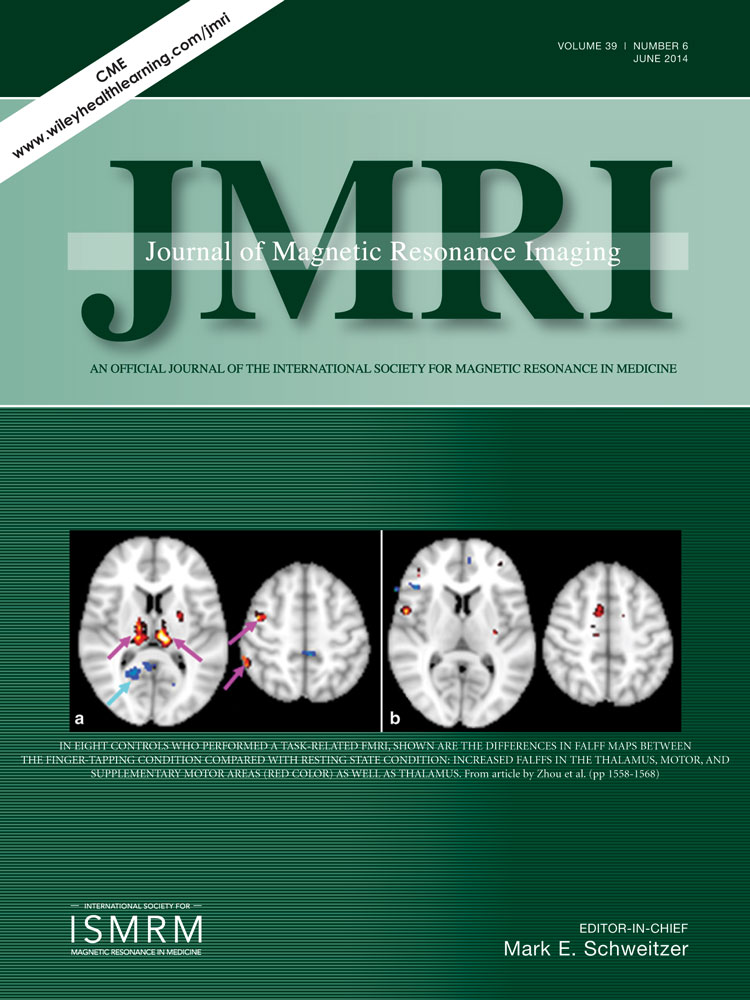Rectal cancer: Dynamic contrast-enhanced MRI correlates with lymph node status and epidermal growth factor receptor expression
Abstract
Purpose
To evaluate correlations between dynamic contrast-enhanced magnetic resonance imaging (DCE-MRI) and clinicopathologic data as well as immunostaining of the markers of angiogenesis epidermal growth factor receptor (EGFR) and CXC-motif chemokine receptor 4 (CXCR4) in patients with rectal cancer.
Materials and Methods
Presurgical DCE-MRI was performed in 41 patients according to a standardized protocol. Two quantitative parameters (k21, A) were derived from a pharmacokinetic two-compartment model, and one semiquantitative parameter (TTP) was assessed. Standardized surgery and histopathologic examinations were performed in all patients. Immunostaining for EGFR and CXCR4 was performed and evaluated with a standardized scoring system.
Results
DCE-MRI parameter A correlated significantly with the N category (P = 0.048) and k21 with the occurrence of synchronous and metachronous distant metastases (P = 0.029). A trend was shown toward a correlation between k21 and EGFR expression (P = 0.107). A significant correlation was found between DCE-MRI parameter TTP and the expression of EGFR (P = 0.044). DCE-MRI data did not correlate with CXCR4 expression.
Conclusion
DCE-MRI is a noninvasive method which can characterize microcirculation in rectal cancer and correlates with EGFR expression. Given the relationship between the dynamic parameters and the clinicopathologic data, DCE-MRI data may constitute a prognostic indicator for lymph node and distant metastases in patients with rectal cancer. J. Magn. Reson. Imaging 2014;39:1436–1442. © 2013 Wiley Periodicals, Inc.




